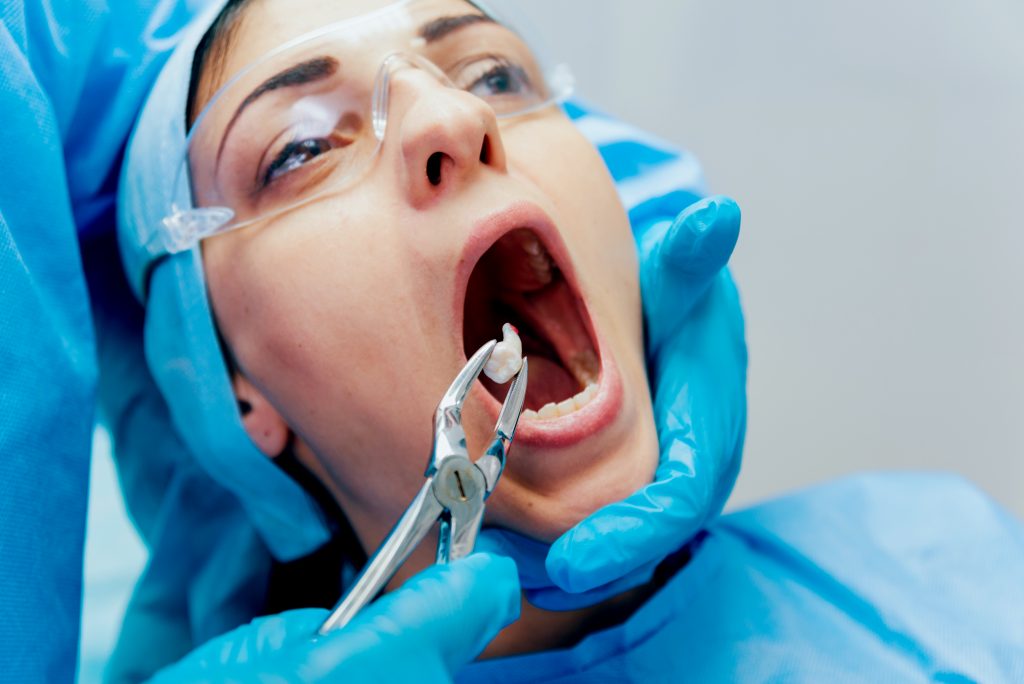Extraction is the complete removal of the tooth along with its roots. It is done under the effect of anesthesia and by using a variety of dental instruments like extraction forceps or elevators.
Timeline:
Extraction can be performed in a single sitting. Very rarely or for a complex extraction we need a second visit to complete the extraction.
Extraction is usually followed by a cause of antibiotics and painkillers when needed.
When Do We Need the Extraction?
Tooth extraction is required when there is significant damage to the tooth and/or to its surrounding structures. The extent of the damage is at a level where there is no treatment available to save the tooth or where it is better to extract the tooth than to treat. However; tooth extraction is the last choice of every dentist.
Tooth Extraction Process:
For the infectious tooth, extraction is usually done during or after a course of antibiotics. This avoids flaring up the infection and increases the effectiveness of anesthesia making it a painless process to perform.
Anesthesia can be given as a nerve block to freeze (numbness where no pain if felt) more than one tooth. I can also be given by using local infiltration where only the surrounding area of the injected site freezes. Block can be accompanied by local infiltration. Block effectiveness and length of numbness is greater than the local infiltration. Anesthesia takes a few minutes to take its complete effect and stays there for half an hour or more. It is not uncommon to inject additional anesthesia for the second or third time in case it does not get effective or if the effectiveness drops during the process.
Extraction is performed very carefully and by avoiding damage to the surrounding tissue and bony structure. This reduces post-operative pain and speeds up recovery time. Depending on the size of the tooth, extraction can lead to an open tooth socket which can be better sealed with the help sutures. Placing sutures can reduce the socket opening and decreases the risk of post-operative infection and getting a painful dry-socket. Sutures are not required when the size of the open socket is not significant.
Extraction is usually done by experienced general dentists or by oral surgeons. When done correctly, it is a successful procedure with minimum to zero post-operative complications.
